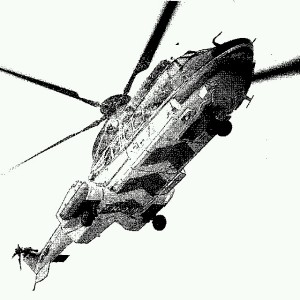North Sea Helicopter Safety – Step Change in Safety Event
The offshore industry safety initiative, Step Change in Safety, held a workforce engagement seminar on Helicopter Safety in Aberdeen in early March.
The presentations are all available to download (click on the presenter’s name below):
This presentation on behalf of the Helicopter Safety Steering Group highlights that 80,000 people have been had dry training to use the Category A Compressed Air – Emergency Breathing System integrated with the Survitec Mk 50 Lifejacket. Over 300,000 journeys have been made with the kit since it was introduced, with around 1 in a thousand resulting in a ‘snag’ being raised with the equipment. Five improvement actions have been identified for the lifejacket / CA-EBS. The presentation also discussed passenger sizing issued (previously discussed by Aerossurance last year).
This UK Civil Aviation Authority (CAA) presentation focused more on the flight operations than the wider issues discussed in the CAP1145 report published 20 February 2014 and the recent CAP1243, the Offshore Helicopter Review Progress Report. It does seem to feature more on automation than CAP1145 did (a subject discussed at the RAeS last year).
HeliOffshore – Gretchen Haskins
HeliOffshore, formed last year, is taking an explicitly collaborative approach to improving helicopter safety, calling for alignment amongst stakeholders. Aerossurance is a member of HeliOffshore. HeliOffshore have 6 safety priority areas. The presentation features draft material from the Flight Safety Foundation (FSF) Basic Aviation Risk Standards Offshore Helicopter Operations (BARSOHO), in the form of a bow-tie. UPDATE 27 May 2015: BARSOHO is launched. UPDATE 1 February 2017: BARSOHO Version 3, fully aligned with the HeliOffshore Safety Performance Model released in 2016, is now available.
Airbus Safety Partnership – Andrew Dettl
Airbus Helicopters have 11,727 helicopters in service, the highest time being an AS332L at 42,000 flying hours (almost certainly the historically significant G-TIGE, the first helicopter to fly with the pioneering IHUMS and with TCAS2). In total the company has 87 million flying hours of service experience (3.2 million in 2014). In particular Dettl discussed five safety initiatives:
-
The preparation of an offshore Flight Crew Operations Manual for the EC225 (now the H225). The FCOM, a first for the helicopter industry was produced in cooperation with Avincis (now Babcock), Bristow and CHC. The FCOM has just been updated too. It remains to be seen if other manufacturers follow this lead.
-
Training Standardisation across the various training organisations in relation to essential training.
- Maintenance Mentors: this initiative recognises that helicopter rotor, transmission and flight control systems can be more prone to undetected error and so provides greater expert support.
-
Vision 1000, which Aerossurance has previously discussed in That Others May Live – Inadvertent IMC & The Value of Flight Data Monitoring
-
Rig ‘n Fly automated approaches (similar to a the Rig Approach system developed by Sikorsky).
Plus operator’s representatives covered background on three critical topics:
Helicopter Maintenance – Lee James
Flight Operations – Tim Glasspool




Recent Comments